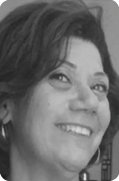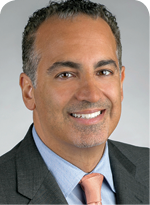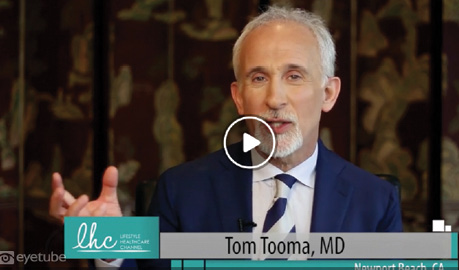
In an effort to explore the plethora of paths that practices take to the proverbial winners’ circle, CRST is showcasing distinct eye surgery practices across the country. Last month, we looked at a small boutique practice dedicated to community service. This month, we present pearls from a vast and growing eye surgery enterprise.
Nvision Eye Centers is the antithesis of traditional health care practices. It is a conglomeration of 28 individual practices or centers in California, Nevada, Oregon, and Arizona focused on giving consumers what they want: the most experienced surgeons, the best technology, and service on par with a five-star resort. At the same time, Nvision is providing surgeons with a practice model they desire: the autonomy of a solo practitioner with the security of a large, successful enterprise.
“The company is built on three central pillars: industry-leading physicians, advanced technology, and a gold-standard patient experience,” explains Nvision President James Pereyra, whose background is in building organizations in the medical device space. Founded in 2010 by LASIK pioneer Tom Tooma, MD, Nvision boasts an impressive roster of physician partners, including a cofounder of TLC Laser Eye Centers, Jeffery J. Machat, MD. The key to attracting leading surgeons is giving them more, says Mr. Pereyra, who explains that more means something different to each partner (see From Academia to Nvision Centers and Like-Minded Surgeons Share an Umbrella). “For some,” he says, “it’s an opportunity to have more of a work-life balance; for others more refers to economic rewards.” Interestingly, he points out, for some, more means increased camaraderie with like-minded professionals. “We connect all of our team members across the company with their colleagues in other centers for training, mentoring, coaching, and camaraderie,” says Mr. Pereyra. ”In fact, one physician shared that, not only is he enjoying interacting with his colleagues, but he hasn’t had this much fun since his residency.”
The strategy is paying off substantially. The company has doubled in size in the past 2 years, and Mr. Pereyra says he expects growth to continue at a similar rate: “To me, growth is a byproduct, or end result, of doing all of the right things. So, at Nvision, we tend to focus more on key quality measures such as patient and employee satisfaction rather than on growth alone.”
Herein, Mr. Pereyra shares Nvision’s strategy for meeting and exceeding those key quality measures.
CRST: Nvision does not fall into any of the typical practice categories—concierge, boutique, group, solo. How would you describe it?

Mr. Pereyra: We strive to be the antithesis of a traditional health care practice. Too many practices are still anchored in the 1970s, relying on outdated technology such as fax machines and an outdated sense of patients’ expectations. We are a huge departure from that antiquated experience. Instead, we aim to be exceptional, as we deliver what we refer to as the “white glove patient experience.” We create a friendly, caring environment, where patients are warmly greeted, ushered through in a timely manner, and treated like a family member at every step of their visit. Our practices resemble neither the large hospital-like practice nor the small boutique. Instead, we are akin to a Nordstrom department store or Four Seasons hotel in that we push our business beyond traditional boundaries [with] an aim to provide the ultimate patient experience.
What’s the Connection Between Nvision Centers and TLC Laser Centers?
In 1999, Tom Tooma, MD, combined his two-office practice with St. Louis-based TLC Laser Eye Centers. It was a good strategy for 1 decade, while LASIK was riding the wave of economic prosperity. After the economic downturn that took LASIK volume tumbling with it, TLC filed for bankruptcy court protection in December 2009. By that time, the company had grown to 12 locations in Southern California. Dr. Tooma bought eight of the TLC Laser Eye Centers in Southern California and renamed them Nvision Laser Eye Centers. Since then, Nvision has grown to 28 centers and has expanded beyond LASIK to include cataract surgery, among other things. TLC is a completely separate organization that continues to provide LASIK surgery.
CRST: Is each of the centers operated independently, or are operations centralized? Also, are Nvision surgeons independent operators or employees of the corporation?
Mr. Pereyra: In our partnerships, we purchase a majority interest in the practices, and the surgeons continue to stay on as Nvision surgeons. They have a home base but may operate at any of our centers. We encourage our physicians to spend time at other Nvision centers and to collaborate with other Nvision surgeons. Additionally, they can avail themselves [of] any of our training opportunities as well as draw upon the resources available at our Support Center. Operations throughout our centers are led by our Aliso Viejo Support Center, where many of the activities are centralized such as billing, compliance, information technology, human resources, training and development, and our call center.
CRST: What are some ways that you attract and recruit the best surgeons?
Mr. Pereyra: We attract the best surgeons by giving them more of whatever it is that’s lacking in their practice before they partner with us. One of the key elements that attracts some physicians is access to the newest technology. Technology is expensive, especially for solo practitioners. Because of the size of our organization, we’re able to leverage our buying power to make technology more accessible and more affordable.
As health care has evolved, the regulatory and administrative stresses on practice management, as well as the economic stresses of keeping up with the latest technology and equipment advances, have created a strain on independent practices. We leverage our infrastructure, size, and scale at every opportunity to better position our organization and our partner practices.
From Academia to Nvision Centers

Jonathan Ramin Pirnazar, MD,
• (949) 951-1457; Nvision Eye Centers; jonathan.pirnazar@nvisioncenters.com
CRST: What role does integrated care or shared care of patients play in the Nvision paradigm?
Mr. Pereyra: Increasing patient volume is a goal of our surgeons. We have more than 2,000 optometrists and primary care providers who actively refer [patients] to our practices. We also have a dedicated and very sophisticated outreach team that visits primary care providers and optometrists. They introduce our physicians to referring doctors and host continuing education events and open houses. Additionally, our Nvision surgeons are encouraged to present their own topics of interest, lead educational seminars, and attend open houses for referring doctors.
A strong relationship with optometry has played a significant role in our success. We believe in partnering with optometry, when appropriate, to deliver seamless care from our practices to theirs.
CRST: What are some challenges that Nvision Eye Centers has successfully surmounted and how?
Mr. Pereyra: In our industry, there are primarily two models: elective cash pay and medical. How do we seamlessly interconnect the elegant complexities of the elective cash-pay model with the complicated logistics of the medical model? That has been our single biggest challenge and arguably one of the biggest challenges in the industry. Nvision, however, is the only large practice group to successfully evolve from an organization that was 99% elective to where you find us today—a practice group that is 50% elective and 50% medical.
How did we rise to the challenge? First, we recognized that the two models greatly diverged in regard to economics and human behavior. The elective patient chooses treatment, arrives at the appointment with an optimistic attitude, and pays with cash. From beginning to end, it is an easy, smooth, and positive experience for the patient and the staff that has been trained to ensure the patient receives a five-star experience.
The medical patient, on the other hand, is generally seeking treatment because he or she is unhealthy, has a need as opposed to a want, and is met by a staff member whose top priority is to deal with insurance issues and move him or her in and out as quickly as possible. Under this model, the economics are more challenging. We had to step back and figure out how to layer the intricacies of the medical model into a cash-pay model and do it successfully.
We learned how to bill, how to communicate with payers, how to code, and how to remain compliant in an evolving health care landscape. At the same time, we had to teach and train the general medical practices we partnered with in terms of how to deliver our well-honed, five-star patient experience. At Nvision, we believe all patients are deserving of the highest level of care and that they are worth the time it takes for us to exceed their expectations.
Like-Minded Surgeons Share an Umbrella

Mihir Parikh, MD
• (858) 558-6000; Nvision Eye Centers; mihir.parikh@nvisioncenters.com
CRST: Does the practice have any unique strategies in place that you believe help maintain its status as a market leader?
Mr. Pereyra: Focus on your stakeholders. Our primary stakeholders in our model are patients, physicians, employees, and our referring doctors. In a fast-paced environment, it’s easy to overlook a stakeholder; therefore, we constantly ask our team, “Which stakeholder are you ignoring today?” This simple question helps to bring focus back onto what’s important.
CRST: What are some specific strategies that help achieve or maintain the practice’s excellence?
Mr. Pereyra: First, constant improvement through training. We started documenting our training 5 years ago with the goal of establishing an Nvision University. Fast forward to today, and we’ve built training modules for almost every role and activity within the practice. Second, leverage technology to generate meaningful practice data and performance metrics.
CRST: Was there a turning point when the practice’s brand crystalized? How did that happen? What were the benefits?
Mr. Pereyra: It was 2015 that marked a turning point for Nvision when we rebranded the organization. We started by interviewing our patients and employees and quickly realized that, although we had a brand and a voice, [they] had not been properly or effectively captured in our marketing materials. We pared down our message to better capture why we do what we do. The benefits to the organization were very material in 2015. Our Net Promotor Score [NPS] hit an organization high of 82 at the end of 2015. An NPS is a marketing mechanism that essentially grades the favorable conversations surrounding a particular brand. Health care organizations traditionally have very low NPSs; it’s not uncommon for health care organizations to have NPSs in the 30 to 40 range. Our performance in 2015 is a testament to being consistent in our actions and simplifying our branding.
CRST: What are some pearls that you can share with other eye surgeons and administrators regarding implementing effective methods of operation?
Mr. Pereyra: We strive to control, or at least have influence on, every component of the patient’s experience. No detail is too small or insignificant. We script and train on everything, not because we want to create a bunch of robots, but because scripts and training build confidence. Once confident, the team will be able to customize and find an approach that plays to their individual strengths. This leads me to my second pearl: leverage your team to train new members. True mastery is only achieved when you can successfully train others.
CRST: Nvision started off as a LASIK practice. With the shrinking LASIK market, will the procedure become a smaller part of the model as the refractive lenticular market grows?
Mr. Pereyra: The LASIK market has been quite interesting. As the market shrank in 2009, many smaller providers were unable to deliver a premium patient experience and stay up to date with advancing technologies. Many LASIK providers either chose or were forced to leave the market as they struggled to deliver premium services, [achieve] good outcomes, and stay up to date. Now that there is less volume, the volume is split among fewer providers and even fewer premium providers. So, although LASIK volume has been flat since 2008, Nvision is outperforming the market. It’s a challenging market, but our business is continuing to grow.
Currently, younger patients are enamored with glasses. They have become a fashion accessory. However, all you have to do is think back 10 years to when everybody was clamoring to get rid of their glasses. I believe the pendulum will swing back in that direction. Will that be in 2 years, 5 years, or 10 years? I’m not certain, but I’m sure it will swing the other way. By that time, Nvision will have very good geographic coverage, and we see our partner physicians as being the beneficiary of that change in sentiment. Right now, we’re putting up small growth rates. When the pendulum swings back, we’ll be in a good position to really accelerate growth in the LASIK market.
Rochelle Nataloni
• freelance medical writer with 25 years’ experience specializing in eye care, aesthetics, and practice management
• (856) 401-8859; rochellemedwriter@gmail.com; Twitter @JustRochelleN; www.linkedin.com/in/rochellenataloni
James Pereyra
• president, Nvision Eye Centers
• (949) 234-8290; james.pereyra@Nvisioncenters.com




